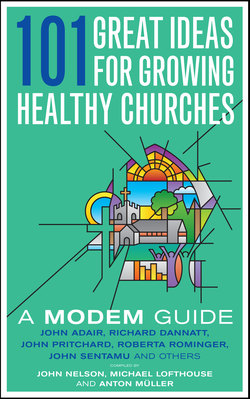Читать книгу 101 Great Ideas for Growing Healthy Churches - John Nelson - Страница 15
На сайте Литреса книга снята с продажи.
ОглавлениеGreat Idea 5: Be a Listening Church
PATRICK GOH
You are worried about many things, but only one thing is needed
Luke 10.41–42
Top Tip: Be ready to lay down your own agenda and really listen.
Business Perspective: A successful organization understands that profitability rests in the full and active participation of its members. Consequently active leaders develop an active listening organization.
During a retreat at a Franciscan friary where the theme was leadership and diversity the Abbot was asked whether he had any tips on how to honour diversity at a practical level. He replied:
If you believe that God works through all of us, you need to somehow enact this belief. One way of doing this is to enter into any conversation with a spirit of anticipation, expecting to hear how God is working through people and what God is saying to them.
On the whole, we don’t do this well. Instead, our conversations are more often about telling others what we feel God is saying to us. In a leadership context, this can lead to an overly top down approach to decision making.
To address this, my colleagues and I have developed a tool called the ‘keynote listener’. This is based on the concept of honouring the voices of the community and the importance of listening in agreeing a common vision. This is a conversational tool that reverses the normal communication process by asking people in authority not to present what they know and think, but to listen for the wisdom of others. It is an attempt to gather the collective wisdom of the whole community (church).
We have used this methodology for church events such as visioning meetings, annual church meetings and youth conferences. It works best when it is possible to bring the whole system, or as many as possible, into one place. Rather than having the usual sermons from ‘keynote speakers’, we reframe them as ‘keynote listeners’, whose role is to listen carefully to the ideas of participants throughout the day.
The idea is to structure enquiry sessions on the main issue we are addressing in creative ways, for example, using talk, posters, drama, music, dance, etc. The role of keynote listeners is to attend these sessions, listen carefully to the contributions, feedback and questions.
The keynote listeners are asked to listen out for:
Ideas, thoughts, and opinions
Common themes and shared concerns
Genuine differences
Motivating values
Concerns and worries
Passion and feeling
Visions and ideals
All the forms of communication, both verbal and non-verbal
Content, passion, and perspective.
There are a number of important principles for the keynote listener:
1 Try not to influence the conversations but remain in silent listening mode.
2 Set your own thoughts and opinions aside and listen openly.
3 Listen with curiosity and fascination, even when you hear ideas with which you may not personally agree.
4 Enter the ‘grammar’ of the participants and hear the way they express their ideas. Hear their words and how they connect ideas and thought.
5 See how participants relate to and interact with one another.
6 Stay faithful to your role and remember that this is not a time for you to put forth your thoughts, but a moment in which you can concentrate on the ideas of others.
Keynote listeners are then given the opportunity to reflect on what they have heard and to share their insights in a structured feedback session. This often works well as a conversation rather than someone simply talking from the front. The following are useful questions for this session:
What surprised you in what you heard?
What moved you?
What most intrigued you?
What were the hotspots?
Did you have a sense of what was unsaid?
Were there elephants in the room?
What is different for you now after being a keynote listener?
What would you like to learn more about?
What would you say is the ‘voice’ of this community?
What differences still divide this community based on what you heard?
What is one piece of wisdom you gained today?
What are the major themes you have heard?
What new insights did you learn?
The purpose of this exercise is to help change the culture of your church from top down to relational leadership, where leadership is about helping your community make sense of complexity, and suggest ways of moving forward together.
For reflection and discussion
If we have been listening …
1 What are the children and young people saying?
2 What are the families/singles in our church and community saying?
3 What are the elderly in our church and community saying?
4 If the way we do things in our church is the result of listening to others in our church and community, what have they been saying?
